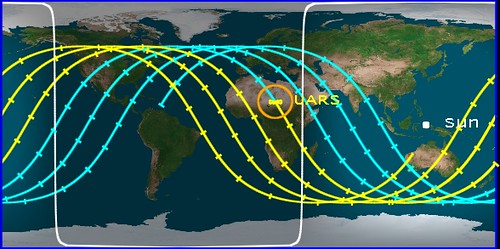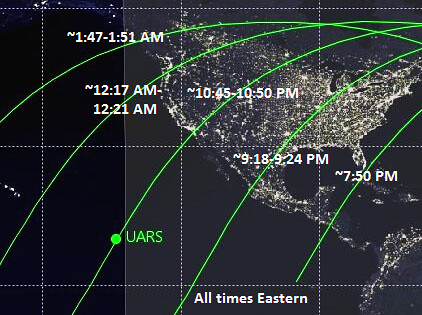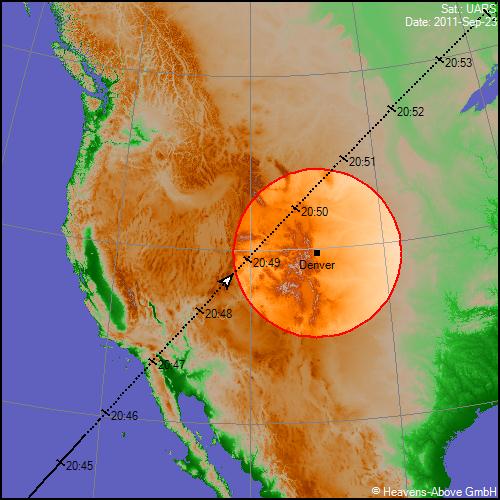[NOTE: For the latest, follow @UARS_Reentry on Twitter.]
NASA’s Upper Atmosphere Research Satellite, better known as “UARS,” will soon crash back to Earth in an uncontrolled re-entry. NASA previously thought this would happen this afternoon, which meant North America was seemingly out of the woods. But according to an update this morning, the satellite’s descent has slowed, and re-entry is now expected late tonight or early tomorrow, Eastern Daylight Time. The Aerospace Corporation’s Center for Orbital and Reentry Debris Studies is currently predicting a re-entry time of 11:16 PM Eastern — plus or minus five hours.
Because the satellite orbits the globe every 90 minutes or so, that broad range of uncertainty (which will narrow as we get closer to crashdown/splashdown) means a whole lot of land and ocean is potentially in its path. Specifically:
So the odds are, it won’t hit the U.S., or anywhere near the U.S. But it could! And so, let’s get a little parochial. Here’s an UNOFFICIAL map that I created, using this map from The Weather Space as my starting point, then adding APPROXIMATE times (based on data from Heavens Above and the above map by the Aerospace Corporation), showing ROUGHLY the time windows when UARS will be passing near or over the U.S. tonight, if it stays aloft long enough to reach each of these arcs in its orbit:
As you can see, if it re-enters a half-hour earlier than its predicted ~11:16 PM EDT time, or an hour later (or 2 hours earlier, or 2 1/2 hours later), it could be over or near the U.S. or Canada.
And now, to get even more parochial… if the timing is juuuuust right, it might be visible from Denver!
That’s from Heavens Above. The dotted line means the satellite will be in Earth’s shadow (which is another way of saying we’ll be long past sunset when it flies over), so it won’t be visible unless it’s in the process of re-entering the atmosphere. But if that happens to be the case, it’ll be awesome!
I’m crossing my fingers — the odds of satellite pieces injuring anyone or causing serious damage is very, very low, even if it does come in over land, because the vast majority of land area is unpopulated. However, as I mentioned yesterday, the odds of a spectacular light show are high, if UARS re-enters in an area where it’s visible:
As the satellite descends to an altitude of about 50 miles (80 kilometers), friction with the atmosphere is converted to light and heat. As it moves on a relatively slow – one could almost use the adjective “majestic” – flight across the sky, what is usually seen is a long trail of light and sparks that can take on virtually every color of the rainbow.
Small chunks of the satellite may be seen to break off and trail behind the main body. (NASA expects up to 26 pieces from UARS to survive re-entry and reach the ground.) If the re-entry occurs at night, it could light up the sky with a brilliance that easily rivals the full moon. Even if it occurs during the daytime, the satellite’s fiery passage across the sky could be readily seen.
Notes veteran satellite watcher Kevin Fetter: “A nice sized [satellite] with a uncontrolled re-entry. What a nice light show it should put on, if the decay occurs where people can see it.”
Can I get an 10:50 PM Eastern Time (8:50 PM Mountain Time) re-entry? LET’S MAKE THIS HAPPEN, PEOPLE!






